- Clone
- H5C6 (See other available formats)
- Regulatory Status
- RUO
- Workshop
- HCDM listed
- Other Names
- LIMP, LAMP-3, Melanoma-associated antigen (ME491), Pltgp40, gp55
- Isotype
- Mouse IgG1, κ
- Ave. Rating
- Submit a Review
- Product Citations
- publications
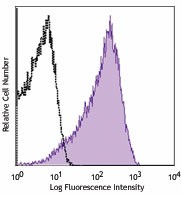
-

Thrombin-activated human peripheral blood platelets were stained with LEAF™ purified CD63 (clone H5C6, filled histogram) or mouse IgG1, κ isotype control (open histogram), followed by anti-mouse IgG FITC. -

Human paraffin-embedded prostate tissue slices were prepared with a standard protocol of deparaffinization and rehydration. Antigen retrieval was done with Sodium Citrate H.I.E.R. 1X at 95°C for 40 minutes. Tissue was washed with PBS/0.05% Tween 20 twice for five minutes and blocked with 5% FBS and 0.2% gelatin for 30 minutes. Then, the tissue was stained with 10 µg/mL of anti-human CD63 (clone H5C6) LEAF™ purified at 4°C overnight, followed by 2.5 µg/ml of anti-mouse IgG (clone Poly4053) Alexa Fluor® 594 (red) for 2 hours at room temperature. Nuclei were counterstained with DAPI (green). The image was captured with a 10X objective.
| Cat # | Size | Price | Quantity Check Availability | Save | ||
|---|---|---|---|---|---|---|
| 353039 | 100 µg | 159€ | ||||
| 353040 | 1 mg | 568€ | ||||
CD63 is a 53 kD type III lysosomal glycoprotein also known as LIMP, LAMP-3, gp55, and melanoma-associated antigen (ME491). CD63 is a member of the tetraspan transmembrane superfamily (TM4SF) protein expressed on activated platelets, monocytes/macrophages, endothelium, fibroblasts, osteoclasts, and smooth muscle cells. CD63 may be involved in platelet activation and is thought to function as a transmembrane adaptor protein. CD63 has been shown to associate with CD9, CD81, VLA-3, and VLA-6.
Product DetailsProduct Details
- Verified Reactivity
- Human
- Reported Reactivity
- African Green, Baboon, Cynomolgus, Rhesus
- Antibody Type
- Monoclonal
- Host Species
- Mouse
- Immunogen
- T cell line HPB-ALL
- Formulation
- 0.2 µm filtered in phosphate-buffered solution, pH 7.2, containing no preservative.
- Endotoxin Level
- Less than 0.01 EU/µg of the protein (< 0.001 ng/µg of the protein) as determined by the LAL test.
- Preparation
- The Ultra-LEAF™ (Low Endotoxin, Azide-Free) antibody was purified by affinity chromatography.
- Concentration
- The antibody is bottled at the concentration indicated on the vial, typically between 2 mg/mL and 3 mg/mL. Older lots may have also been bottled at 1 mg/mL. To obtain lot-specific concentration and expiration, please enter the lot number in our Certificate of Analysis online tool.
- Storage & Handling
- The antibody solution should be stored undiluted between 2°C and 8°C. This Ultra-LEAF™ solution contains no preservative; handle under aseptic conditions.
- Application
-
FC - Quality tested
IHC-P - Verified
ICC, IP, WB - Reported in the literature, not verified in house - Recommended Usage
-
Each lot of this antibody is quality control tested by immunofluorescent staining with flow cytometric analysis. For flow cytometric staining, the suggested use of this reagent is ≤1.0 µg per million cells in 100 µl volume or 100 µl of whole blood. For immunohistochemistry on formalin-fixed paraffin-embedded tissue, a concentration range of 5.0 - 10.0 µg/ml is suggested. It is recommended that the reagent be titrated for optimal performance for each application.
- Application Notes
-
Additional reported applications (for the relevant formats) include: Western blotting1, immunofluorescence2, and immunoprecipitation1.
-
Application References
(PubMed link indicates BioLegend citation) -
- Hildreth JE, et al. 1991. Blood 77:121. (IP, WB)
- Beatty WL, et al. 2006. J. Cell Sci. 119:350. (IF)
- Product Citations
-
- RRID
-
AB_2800940 (BioLegend Cat. No. 353039)
AB_2800941 (BioLegend Cat. No. 353040)
Antigen Details
- Structure
- Tetraspan transmembrane superfamily (TM4SF), type III lysosomal glycoprotein, 53 kD
- Distribution
-
Activated platelets, monocytes, macrophages, endothelium, fibroblasts, osteoclasts, and smooth muscle
- Function
- Platelet activation
- Interaction
- CD9, CD81, VLA-3, and VLA-6
- Cell Type
- B cells, Endothelial cells, Fibroblasts, Macrophages, Monocytes, Osteoclasts, Platelets
- Biology Area
- Cell Adhesion, Cell Biology, Immunology
- Molecular Family
- Adhesion Molecules, CD Molecules
- Antigen References
-
- Azorsa DO, et al. 1991. Blood 78:280.
- Kishimoto T, et al. Eds. 1997. Leukocyte Typing V1. Oxford University Press New York.
- Hildreth JE, et al. 1991. Blood 77:121.
- Anzai N, et al. 2002. Blood 99:4413.
- Gene ID
- 967 View all products for this Gene ID
- UniProt
- View information about CD63 on UniProt.org
Related Pages & Pathways
Pages
Related FAQs
- Do you guarantee that your antibodies are totally pathogen free?
-
BioLegend does not test for pathogens in-house aside from the GoInVivo™ product line. However, upon request, this can be tested on a custom basis with an outside, independent laboratory.
- Does BioLegend test each Ultra-LEAF™ antibody by functional assay?
-
No, BioLegend does not test Ultra-LEAF™ antibodies by functional assays unless otherwise indicated. Due to the possible complexities and variations of uses of biofunctional antibodies in different assays and because of the large product portfolio, BioLegend does not currently perform functional assays as a routine QC for the antibodies. However, we do provide references in which the antibodies were used for functional assays and we do perform QC to verify the specificity and quality of the antibody based on our strict specification criteria.
- Does BioLegend test each Ultra-LEAF™ antibody for potential pathogens?
-
No, BioLegend does not test for pathogens in-house unless otherwise indicated. However, we can recommend an outside vendor to perform this testing as needed.
- Have you tested this Ultra-LEAF™ antibody for in vivo or in vitro applications?
-
We don't test our antibodies for in vivo or in vitro applications unless otherwise indicated. Depending on the product, the TDS may describe literature supporting usage of a particular product for bioassay. It may be best to further consult the literature to find clone specific information.
Other Formats
View All CD63 Reagents Request Custom ConjugationCustomers Also Purchased
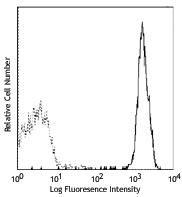
Compare Data Across All Formats
This data display is provided for general comparisons between formats.
Your actual data may vary due to variations in samples, target cells, instruments and their settings, staining conditions, and other factors.
If you need assistance with selecting the best format contact our expert technical support team.
-
PE anti-human CD63

Thrombin-activated human peripheral blood platelets were sta... -
FITC anti-human CD63

Thrombin-activated human peripheral blood platelets were sta... -
Pacific Blue™ anti-human CD63

Thrombin-activated human peripheral blood platelets were sta... -
APC anti-human CD63
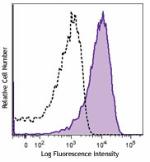
Thrombin-activated human peripheral blood platelets were sta... -
PE/Cyanine7 anti-human CD63
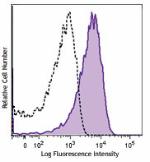
Thrombin-activated human peripheral blood platelets were sta... -
Alexa Fluor® 647 anti-human CD63
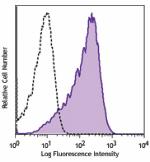
Thrombin-activated human peripheral blood platelets were sta... -
Biotin anti-human CD63
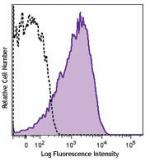
Thrombin-activated platelets were stained with biotinylated ... -
PerCP/Cyanine5.5 anti-human CD63
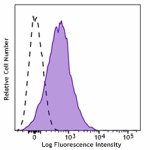
Thrombin-activated human peripheral blood platelets were sta... -
PE/Dazzle™ 594 anti-human CD63

Thrombin-activated human peripheral blood platelets were sta... -
Brilliant Violet 421™ anti-human CD63
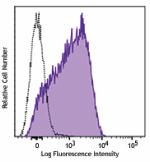
Thrombin-activated human peripheral blood platelets were sta... -
Brilliant Violet 650™ anti-human CD63

Thrombin-activated human peripheral blood platelets were sta... -
APC/Fire™ 750 anti-human CD63
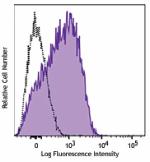
Thrombin-activated human peripheral blood platelets were sta... -
Alexa Fluor® 700 anti-human CD63

Thrombin-activated human peripheral blood platelets were sta... -
Brilliant Violet 510™ anti-human CD63
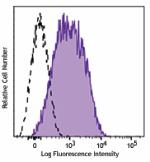
Thrombin-activated humana peripheral blood platelets were st... -
Alexa Fluor® 594 anti-human CD63
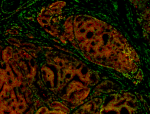
Human paraffin-embedded prostate tissue slices were prepared... -
TotalSeq™-A0404 anti-human CD63
-
Alexa Fluor® 488 anti-human CD63

Thrombin-activated human peripheral blood platelets were sta... -
Ultra-LEAF™ Purified anti-human CD63
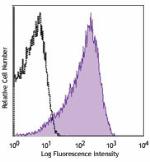
Thrombin-activated human peripheral blood platelets were sta... 
Human paraffin-embedded prostate tissue slices were prepared... -
Brilliant Violet 711™ anti-human CD63
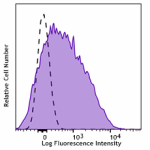
Thrombin-activated human peripheral blood platelets were sta... -
Brilliant Violet 785™ anti-human CD63

Thrombin-activated human peripheral blood platelets were sta... -
APC/Cyanine7 anti-human CD63
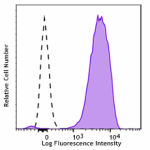
Thrombin-activated human peripheral blood platelets were sta... -
TotalSeq™-B0404 anti-human CD63
-
TotalSeq™-C0404 anti-human CD63
-
Brilliant Violet 605™ anti-human CD63 Antibody
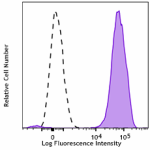
Thrombin-activated human peripheral blood platelets were sta... -
PE/Cyanine5 anti-human CD63 Antibody
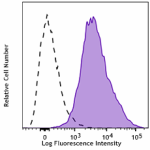
Thrombin-activated human peripheral blood platelets were sta...
 Login / Register
Login / Register 







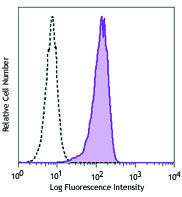
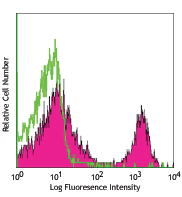



Follow Us